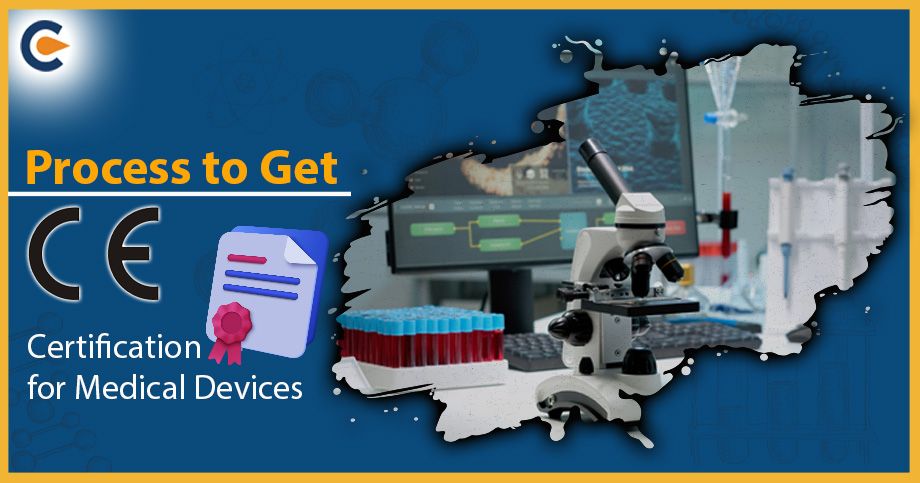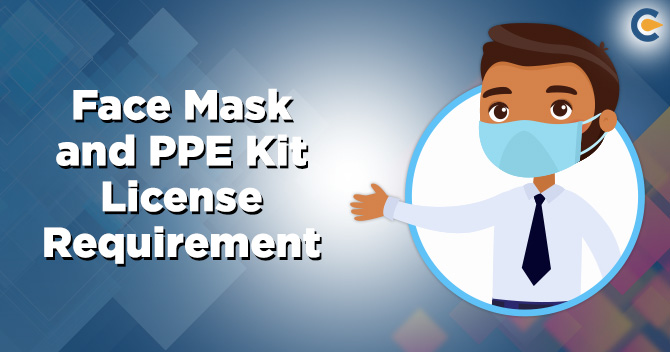CE marking refers to a sign of product quality granted by the notified certification body. Medical devices manufacturer must secure CE certification to sell their products in the European market. CE is an abbreviated term for “Conformité Européene” (which means European Conformity). It acts as proof that the given product complies with the underlying EU standards for quality. The CE signifies that the manufacturer has fulfilled applicable legal requirements that vouch for the product quality. In this blog we will discuss the process to get CE Certification for Medical Devices.
Most medical device makers must underpin their quality management system authenticated by the independent notified body (NB) by securing CE marking.
A notified body is an EU-recognized agency that can perform the assessment of conformity concerning medical devices in view of underlying regulatory standards. Once the manufacturer successfully undergoes the auditing requirements, declared conformity, and affixes CE marking, their products became eligible to be sold across the European market.
Process to Secure CE Certification for Medical Devices
Securing CE Certification for medical devices is a complicated process that involves delicate paperwork, assessment, and so on. However, if you choose to abide by the following procedure, things will become easier for you.
Step 1: Identify Product Classification and Perform an Assessment
The first step to be ascertain the product classification. It is important to figure out what type of regulations encompass your device. Primarily, the following regulations are in force that govern the supply chain of medical devices:
- Medical Device Regulation (MDR 1017/745)
- In Vitro Diagnostics Regulation (IVD 2017/746)
As per European regulations, the applicant must refer to the Annex VIII of the Medical Device Regulation (MDR) to ascertain the product classification based on its risk profile. Classification criteria have been formulated by considering the invasiveness of the device and its intended use.
A provided decision tree leverages 22 brief rules that will help you with product classification based on the risk threshold. Once done, you will be able to know the applicable regulation for your product.
Step 2: Underpin a Quality Management System (QMS)
Underpinning a comprehensive QMS is a fundamental requirement for securing CE Certification for medical devices. The QMS standards formulated by the European Commission are identical to those of the FDA and most medical device manufacturers rely on ISO 13485[1] for that purpose.
Quality management systems entail a long list of policies and procedures that provides for holistic development of the entire process and risk reduction.
QMS takes every individual into account which contributes to the production and quality of medical devices and encourages them to abide by the rules, pre-determined procedures, and corrective measures.
MDR Has Proposed 12 Important Requirements That Constitute The QMS.
- A strategy relating to regulatory compliance, including processes for conformity assessment and device modification.
- Identification & evaluation of safety and performance prerequisites.
- Risk management
- Resource management
- Clinical evaluation
- Product realization
- Verification of Unique Device Identity assignments
- Creation and administration of a PMS (Post-Market Surveillance System)
- Communication with authorities, EU-recognized notified bodies, and other stakeholders
- Process for nearly fatal incidents
- Provisioning of corrective and preventive actions and vetting of effectiveness
- Processes concerning monitoring and probing output, data analysis, and product improvement
There is no compulsion in MDR for medical device manufacturers to adopt ISO 13485, but it is only legitimate standard preferred by EU for standardization of critical processes. ISO 13485 makes risk assessment and process tracking super-easy.
Step 3: Create a Technical File to Fulfil EU MDR Norms
Post knowing product classification and implementing a quality management system, the next step is to subject your device to European Commission regulations to meet the conformity requirements.
For most medical devices, you must go through the norms cited under the Medical Device Regulation (MDR 2017/745), ensuring that your device is considered fit across different grounds, such as;
- Appropriateness for the intended use
- Labelling
- Safety
- Packaging
- Effect of storage and transportation
Annex I of technical document entails the general safety and requirements concerning the utilization of CE Marking or CE Certification for Medical Devices. If your medical device falls under the risk classes I, IIa, or IIb, you have to prepare a technical file that encloses details concerning the device’s conformity and confirmed the adherence to the essential requirements.
In A Nutshell, The Technical File Should Enclose The Following Information Without Fail:
- Product Description and Specifications
- Details concerning manufacturing
- Risk Management File
- Design Verification Report
- Validation Test Reports
- Clinical Evaluation
- Labelling
The requisite information for devising and producing a technical file must enclose in your QMS. It should be within reach of concerned staff members.
For Class III devices, a Design Dossier should be prepared and it must enclose data from the technical file, and the design process concerning the medical device.
Step 4: Let the Notified Body Perform an Audit for Conformity Check
Once you are assured of product classification, underpinned a QMS, and prepared a technical document, the next step is to let the notified body perform an audit.
Note: Class I Devices Are Free From Any Auditing Requirements from a Notified Body.
A notified body is a competent agency acknowledged by the European Commission. These agencies have the right to perform audits of medical device makers, irrespective of their sizes or structure.
Step 5: Prepare a Declaration of Conformity of the Medical Device
The successful audit will lead to the grant of approval for the usage of CE marking or CE Certification for Medical Devices and ISO certificate that confirms that your QMS is fully compliant.
The last step is to prepare the Declaration of Conformity- a legal document that affirms that all medical devices adhere to essential requirements of EU MDR and other applicable norms. Post this, you will eligible to affix the CE market on your medical devices.
Recent Changes Made To EU MDR Concerning CE Marking
Overall, the process for securing a CE marking cited in MDR 1017/745 is more or less the same as the preceding process from MDD. But, some significant changes have come to light that is worth your attention.
Addition of New Devices
The MDR entails some medical devices that are yet to be deemed fit for medical use but adhere to the same risk that is prevalent with devices falling under the new regulations. This change has been prominent with items like dental filling material, contact lenses, and breast implants.
Focus on PMS (Post-Market Surveillance)
The new MDR requires medical device companies to put emphasis on post-market surveillance, which involves gathering and evaluating data concerning medical devices to determine their effectiveness and safety.
New Traceability Requirements
Medical device manufacturers should affix device and product numbers on the devices they manufactured for commercial purposes. This will help trace the product in the supply chain.
Conclusion
We know that dealing with medical device directives to qualify for CE marking or CE Certification for Medical Devices is an uphill task for any client. There are tons of requirements that need to be fulfilled before making products eligible for European markets. We allow our clients to clearly understand the underlying legalities and also help them secure the CE Certification for Medical Devices with zero hiccups.
Read Our Article: What Is CE Certification? -Know About It In Detail











